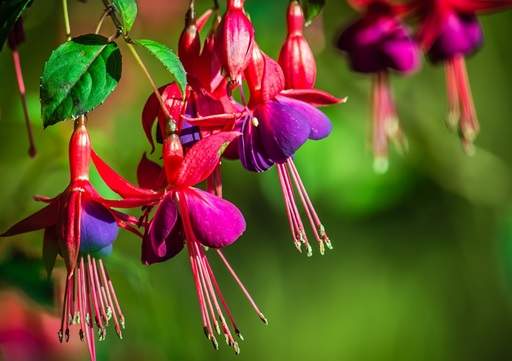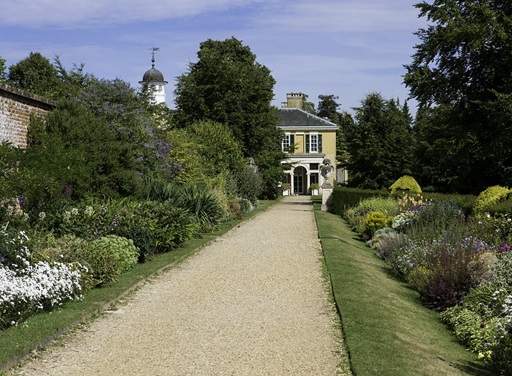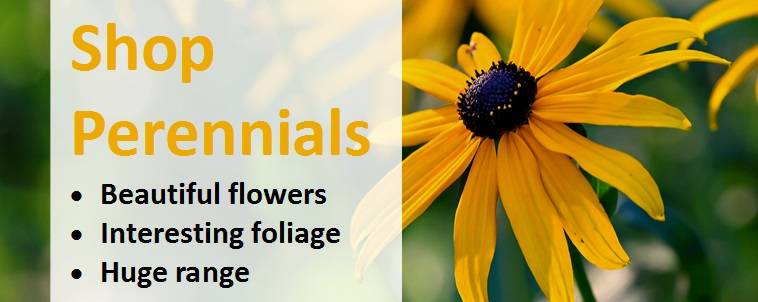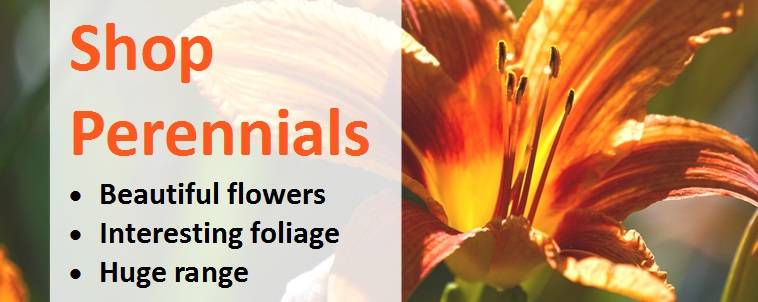Guide to Perennials
Perennials comes from the Latin 'perennis' which means 'many years', reflecting the way perennials come back year after year even if some die back to the ground over the winter. They are the easy-to-grow, reliable stalwarts of the garden which make up the backbone of herbaceous and mixed borders. There is a huge range to choose from with varying shapes, sizes, styles and flowering periods. They can be either short or long lived - perennials such as delphinium and lupines will last just 3-4 years, whilst most will live for around 15 years and some such as peonies can stay with you for a lifetime. Flowering periods are similarly diverse spanning anything from 2 weeks to 2-3 months with interest typically peaking from summer or early autumn. Some perennials are clump-forming, producing a tidy mound of neat foliage, whilst others such as gooseneck loosestrife will produce a more sprawling display and may need to be staked to prevent them from flopping over, particularly when in flower in the summer.

One of the most recognisable perennials - the ornamental poppy
Perennials vs. Herbaceous Perennials vs. Borderline Hardy Shrubs
To get a bit of terminology out of the way: perennials loosely refers to all non-woody plants grown in the border which are not trees, shrubs or bulbs. They can be deciduous or evergreen, such as grasses. Herbaceous perennials describes the sub-group of perennials which die back in the winter. They differ to annuals because when they die back to the ground each winter this is just a dormancy period and they will burst back into life again the following spring. To complicate matters, some plants that might grow as perennials in a milder climate might be treated by a gardener as an annual in a harsher environment. For example, tomato vines live for several years in their natural tropical/sub-tropical habitat but are grown as annuals in temperate regions where they can't survive the winter. Similarly, some borderline/half hardy bushes such as Fuchsia may be grown as shrubs in warmer regions, but herbaceous perennials in colder regions. A way to work around this if you live in a cooler climate is to over-winter half hardy shrubs indoors. Individual microclimates and good free-draining soil can also make a huge difference to their ability to survive.

Fuchsia grows as a shrub in sub-tropical regions and a herbaceous perennial in temperate regions
Uses for Perennials
Some 'traditional' gardeners may still maintain herbaceous borders or island beds filled exclusively with herbaceous perennials to maximise the summer impact, but these are less popular than they used to be because of peoples' desire to sustain interest throughout the year. One alternative is to use them in a mixed border where they combine well with annuals, biennials, bulbs, grasses, shrubs and trees to create an interesting and varied display. But don't limit yourself... perennials are also perfect for adding a splash of colour to woodland or water-side settings, whilst clump-forming varieties look great under-planted around the edge of a larger plant in a container.

Traditional herbaceous borders
How do perennials grow back?
Perennials have developed structures that allow them to live from one year to the next (despite dying back to the ground) through a form of vegetative reproduction, rather than seeding. They have tubers, bulbs, crowns or some other sort of underground stems to survive periods of dormancy over the winter cold period.

Garlic is an example of a perennial that grows back from bulbs each year (if not harvested, of course)
Buying Perennials
At Jackson's Nurseries, we supply mature plants in 9cm or larger containers, which will establish and fill out more quickly and produce flowers from the outset. Why not take a look at our perennials range now?
-
Plant Guides
- Guide to Bamboo Plants
- Guide to Climbing Plants
- Guide to Climbing Roses
- Guide to Conifers
- Guide to Floribunda Roses
- Guide to Fruit Bushes
- Guide to Fruit Trees
- Guide to Garden Ferns
- Guide to Garden Shrubs
- Guide to Heather Plants
- Guide to Hedging Plants
- Guide to Herb Plants
- Guide to Herbaceous Perennials
- Guide to Hybrid Tea Roses
- Guide to Japanese Maple Trees
- Guide to Ornamental Grasses
- Guide to Rhododendrons
- Guide to Topiary
Share this page:


